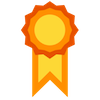On Page Optimisation is where all the information gathered in earlier parts of the process guide us as to how we should construct the actual pages. Each page should, ideally, act as a “landing page” so try and forget the notion that the “home page” is the one to be optimised.
It will be optimised but other pages should get the same treatment – but for different keywords. On one site I am familiar with the home page is the ‘most popular’ landing page in absolute terms. But of all the page visits only 3% land directly in the home page.
Some optimisation techniques will be dependent on what type of site you have. Having said that, all optimisation should include the following.
Title Tag: For keywords and geographic and other relevant information such as company name. On that, many companies optimise (unwittingly) for their company name in the title. All well and good if it’s a recognised brand and that name will be searched. If it’s not, place more emphasis on the products/services that a person will be searching for.
Meta Tags: In terms of meta tags, after your title tag, the meta description tag is the next most important. It’s the small paragraph that appears in search results and it is most likely the part of the selection process that searchers decide to click or not. Depending on how long it takes to have your pages re-indexed, it could contain information that may change over the year – “Sale On Now”, “Free delivery in December” – something that in the search results will set you apart from the other ten websites vying for that click.
Optimised HTML Tags: There are several HTML tags that should be optimised:
-
H (1-6) Tags – again keywords in there, but not stuffed.
-
Internal Links: For both links to pages, images or documents you should use keywords in the link text. Internal links are considered to be particularly important, but normally passed over in the rush to start exploring external links.
- Bold and Italics are useful
- Blockquotes show an emphasis
Image Tags: all of your images should be optimised. Images have their own search category and therefore should be given some extra attention.
-
have an ‘alt’ and a title in every image. The Alt is the descriptor that shows up if the image is missing. The title is the tool tip that shows up when you hover over the image.
- Rename the file if it’s not user friendly. It may be machine friendly, but it also should convey what the image actually is
- again, link back to your images in a descriptive way.
If you want to see why using keywords in internal linking for images is important, do a Google image search for ‘click here’. You’ll see a good few ‘click here’ buttons, which is fine. But you’ll also see a huge number of images that have been indexed under ‘click here’ and not under something that they actually are Click Here! It’s such a waste of SEO property.


